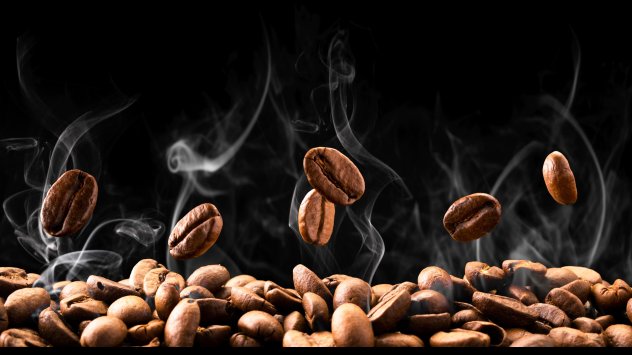
by Preslav Raynov
World’s economy awakens after the pandemic, but on a high price. Number of factors define the perfect storm which shot up prices of the most common varieties of coffee– Arabica and Robusta. Climate abnormalities, broken supply chains and growing demand were the main drivers. Just for 2021 the prices of exchange-traded futures in New York and London rose with 45,8% for Arabica and 52.2% for Robusta respectively, reaching new 10-year peaks.
The expectations for 2022 are even more concerning in terms of price pressure. The trend is forecasted to continue and coffee prices to rise with extra 15%. All this means that really soon the cost of our morning wake up can go up significantly.
Why the coffee is becoming more expensive? The main reasons for the record rise in coffee prices were caused by disruptions in producing in Brazil – the largest coffee producer and exporter.
This year, a 27% drop is expected in green coffee exports from the country, compared to a year earlier, when a record 63 million bags (1 bag = 60 kilograms) were produced, this year the quantities will be around 47 million bags, placing international markets in serious deficit. Brazil produces over 40% of the world's quantities, and is a major destination for the production of the Arabica variety, accepted as a benchmark on international markets in New York and London.
The production volumes in the contry regularly face turbulent volatility and cyclicality due to climate abnormalities. Under normal circumstances, large processors and consumers in the market do not feel this volatility due to the fact that they have hedged prices and provided good inventories. But this year was different!
Brazil's coffee crop has been negatively affected by climate abanormalities twice a year. At the beginning of the season in April and May there was extremely dry weather, which affected the flowering of the plantations and the formation of coffee berries. Later in the season, we also witnessed severe frosts in most of the plantations, as temperatures dropped to almost minus 2 °, which was extremely detrimental to the plants. A number of farms have even registered the complete destruction of coffee bushes, which will inevitably have an impact in the coming seasons.
Coffee freezing is not an unknown phenomenon in Brazil, but for the last 25 years, it has been the coldest weather the country has ever recorded. It is estimated that almost 10 million bags of coffee have been destroyed by this year's harvest, and the consequences for the upcoming season will also be very severe. Industry experts warn that the effects on global coffee markets could be felt even in the next 4 years, expressed in a chronic shortage of Arabica.
Brazil is the lergest producer of coffee and the international markets react extremely dynamic to the quantities being produced and exported from there. In 1994 a similar climate phenomenon sends coffee prices to record highs from almo 4,5 dollars per pound (453 gr) - *for reference at the moment prices of Arabica in New York are 2,1 dollars per pound.
The coffee deficit in Brazil has shifted the focus to demand for robusta varieties, and their prices have also started to skyrocket. The second hit on coffee markets came from one of the largest coffee producers – Vietnam. The country imposed full lockdown in one of its main export cities - Ho Chi Minh City from where huge quantities of raw coffee beans depart. In many places in the provinces that produce coffee, severe restrictions have been imposed on the movement and containment of the pandemic, which has made it extremely difficult to export raw materials and put international buyers in a difficult situation.
Vietnam is the second largest coffee producer after Brazil, as the country produces mainly Robusta. An interesting fact is that Vietnam ensures almost 20% of coffee import in the European markets. Many of the coffee processors and traders who turned to Vietnam to compensate with cheaper quantities of Robusta found themselves in an unpleasant surprise due to the inability to deliver the demanded quantities for export. Therefore the price of Robusta rose with over 45% only for the first 10 months of 2021.
Bitter supply chains
Bad weather conditions for plantations in Brazil, anti-pandemic measures in Vietnam and Columbia were only a part of the factors causing rising in coffee prices. Covid pandemic caused severe problems in the international transport of goods. In the last 18 months we saw shortage of transport containers, and the transport costs rose 5 to 10 times. Container shipping prices rose by almost 300%, and the most demanded 40-foot containers reached prices of almost $ 16,000 for major sea routes, with prices ranging from $ 1,500 to $ 2,000 in early 2020.
Coffee is a comodity which before reaching our cups, travels a long war from markets of origin to the processors and end customers. Therefore the problems in the supply chain are transferred to the prices of the final products. According to the Brazilian Export Association, approximately 3,5 million bags cannot be delivered on time due to struggles in the supply chains which costs a little bit over 500 million dollars in the country’s export balance. According to the agency, 40% to 60% of all deliveries are being forgotten or cancelled due to the lack of containers or delays in the supply chains of raw materials. In previous seasons, this percentage did not exceed 10-15%. And despite the fact that supply chains have begun to adapt and normalize, the problems are expected to continue in 2022, and the final prices of black aromatic liquid in our glasses will continue to rise.
Non-stop consumption
Demand and consumption of coffee are recovering from the pandemic effects, which for the first time in 15 years managed to disrupt the trend of rising consumption.
For the current season, the global demand for coffee is projected to reach almost 173 million bags, or just over 10 million tons of coffee. Coffee production has increased from 93 million bags in 1990 to 173 million today, or 85%. 821 billion cups of coffee are consumed annually, and coffee production has increased from 93 million bags in 1990 to 173 million today, or 85%. In 2021, the coffee market is estimated at approximately $104 billion, and growth is expected to strengthen over the next 5 years. The deficit in the coffee market next season is expected to reach almost 2 million bags.
We can say that the pattern of coffee consumption is not incluenced to such an extent by the end product prices. This is related mainly to the type of product and its place in our daily lives. People often associate coffee with a way of life and an established "ritual". This puts large coffee companies in a good position due to the fact that consumers are willing to pay even higher prices for goods. It is estimated that the price of coffee should reach almost $ 4 per pound before it has a negative impact on end-user consumption. Until then, consumers are mainly choosing to consume products from a lower segment, or an increase in household consumption, which is happening now.
And while tailor-made consumers are willing to pay more for a cup of coffee, a number of large companies are already feeling the pressure of rising prices on almost everything.
Shares of Starbucks (NASDAQ: SBUX) fell nearly 10 percent after the Seattle-based corporation announced weaker-than-expected sales in September, as well as a reduced operating profit margin. The management pointed out that the main problem is the rise in the price of raw materials, as well as the global supply chains, which are still suffering from extreme congestion. Although Starbucks already announced a 5% rise in the prices of its final products in July this year, the company's management announced plans for a new rise in the coming months in order to compensate for the widespread rise. Nestlé, Coca-Cola and Mondelez, which are also one of the giants in the trade and processing of coffee, have announced that they are starting to more actively transfer price jumps to their end users.
Producers
The coffee industry provides a livelihood for 128 million people worldwide, with 80% of the raw material produced by just over 25 million small family farms, for which this is the main income. Rising prices on international markets is good news for producer countries, but the price is still not distributed proportionally across production chains. Coffee production still remains quite controversial and often the incomes of small farms are insufficient even to cover production costs and basic household needs. As with other raw materials, supply chains are quite distorted and the main value of coffee is realized after it is exported and processed by large companies.
The next cup
Although the price jumps are really impressive, end users have not yet felt the full scale of the price increase in their morning cup of coffee. Next year, the market will remain strongly influenced by the climate in Brazil, as well as by Covid-related disruptions affecting trade in Asia and pervasive supply chain disruptions.
THE BOTTOM LINE The jump in the price of coffee on the international markets is good news for the producer countries, but the price is still not distributed proportionally in the production chains.



